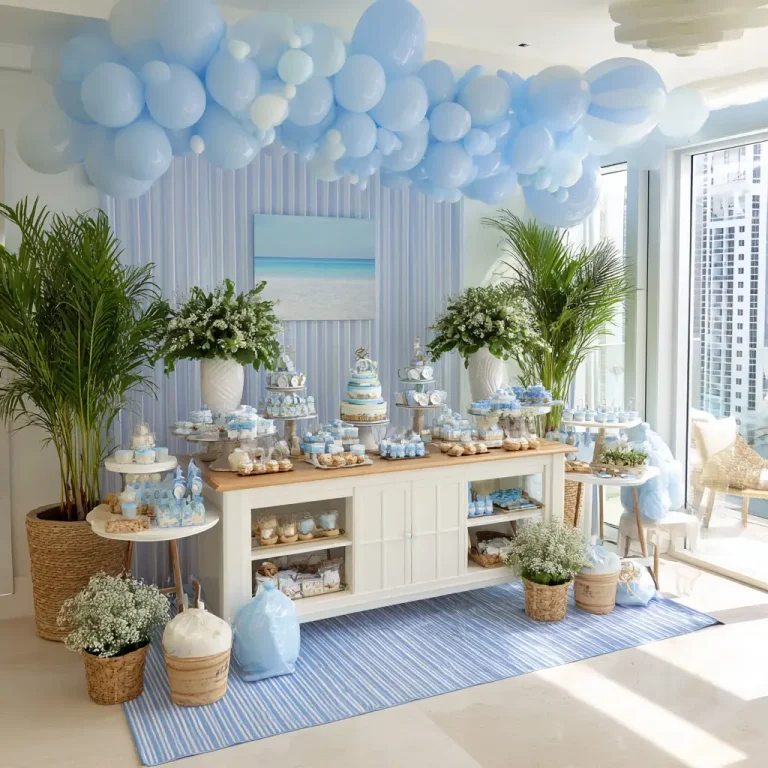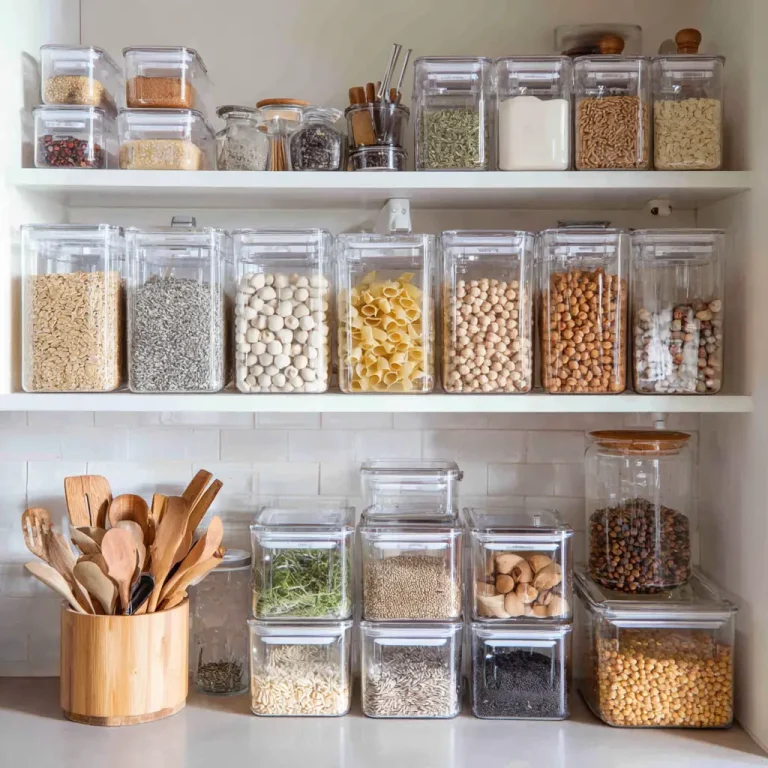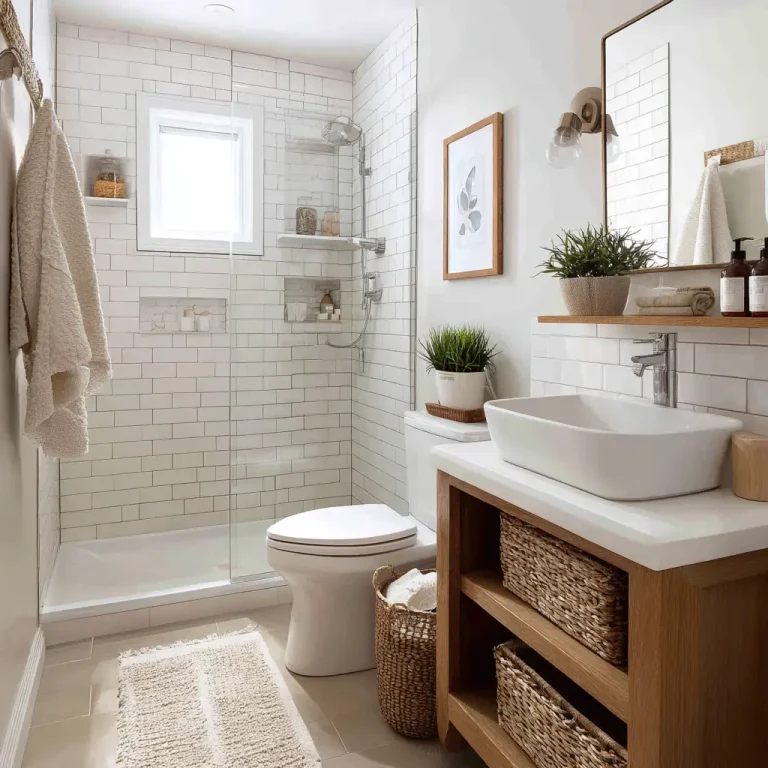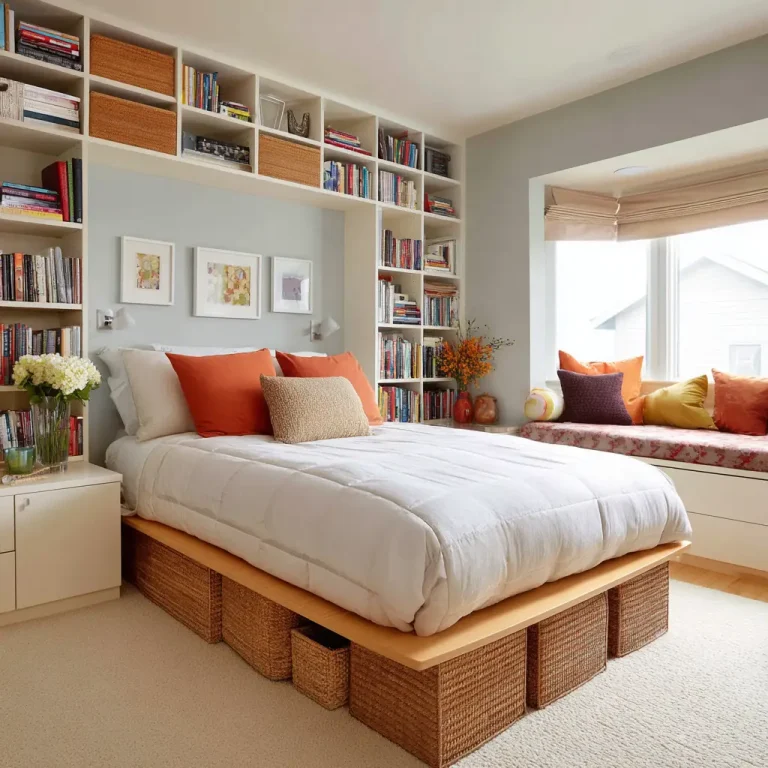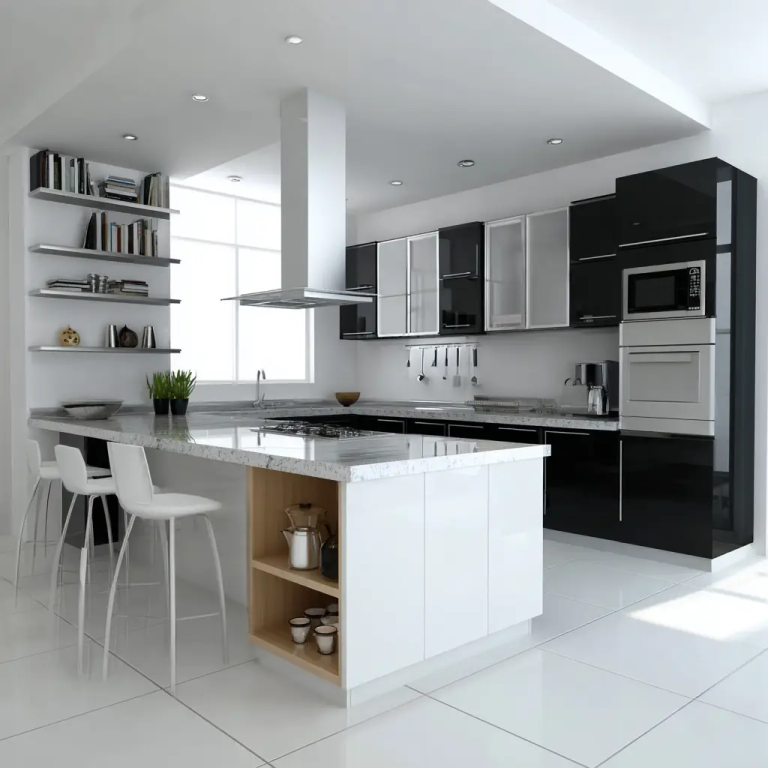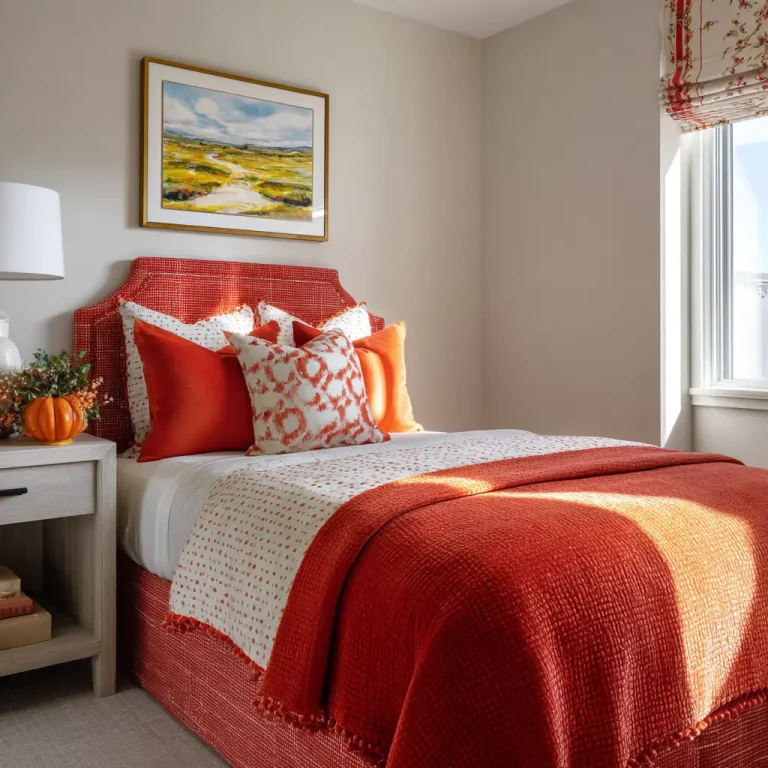20 Beautiful and Effective Terrace Garden Ideas to Transform Your Space
A terrace garden is more than just a collection of plants—it’s a personal retreat where nature meets the skyline. In urban living, where space is often limited, terrace gardens offer a unique opportunity to breathe life into concrete spaces. From aesthetic appeal to environmental benefits, these gardens can become your sanctuary, kitchen extension, or creative outlet. Whether you’re working with a small balcony or a sprawling rooftop, these 20 ideas will help you turn any terrace into a lush, functional paradise.
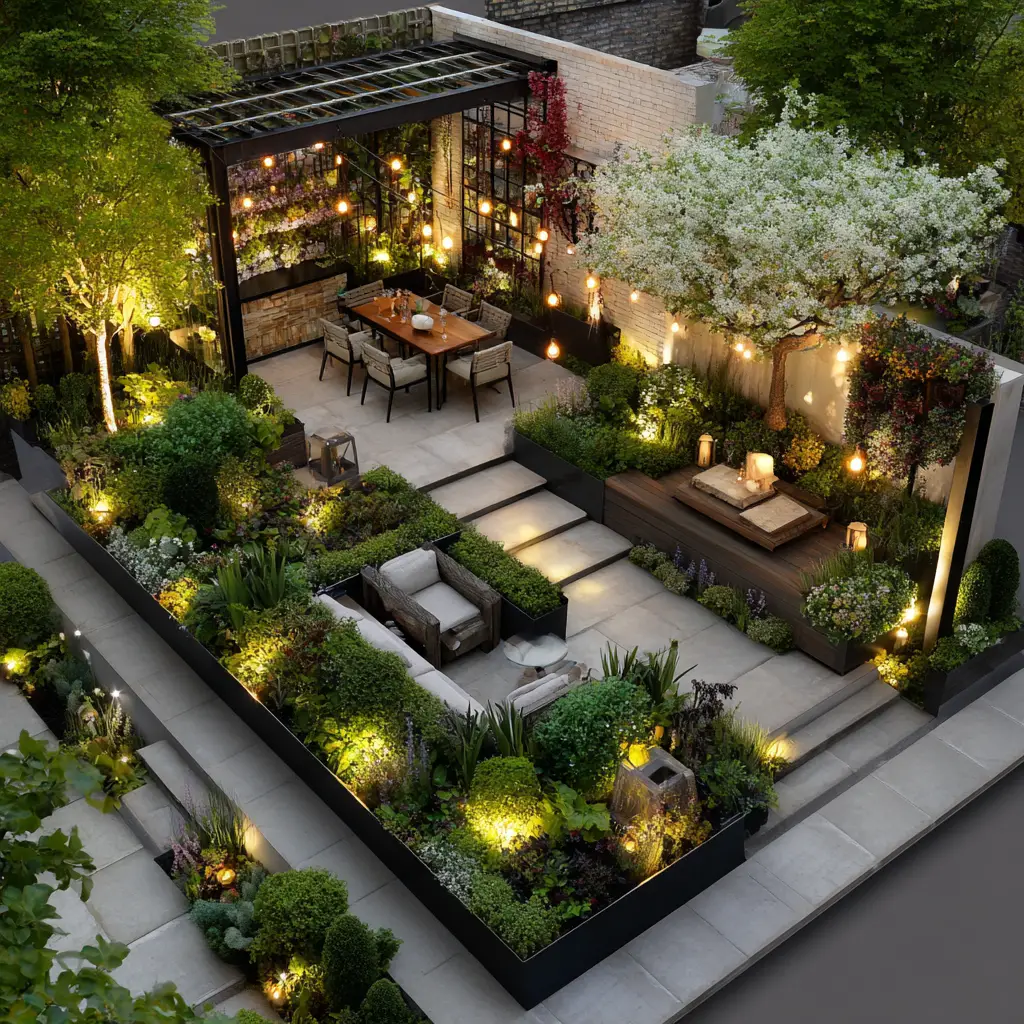
1. The Minimalist Green Haven
Less is more with this style. A minimalist garden focuses on clean lines, limited plant varieties, and neutral tones. Choose pots in white, black, or grey and plant easy-care greenery like snake plants, rubber plants, or ZZ plants. This style is especially good for busy individuals who want a touch of nature without too much maintenance. Add a single chair or bench to make it your daily unwind zone.
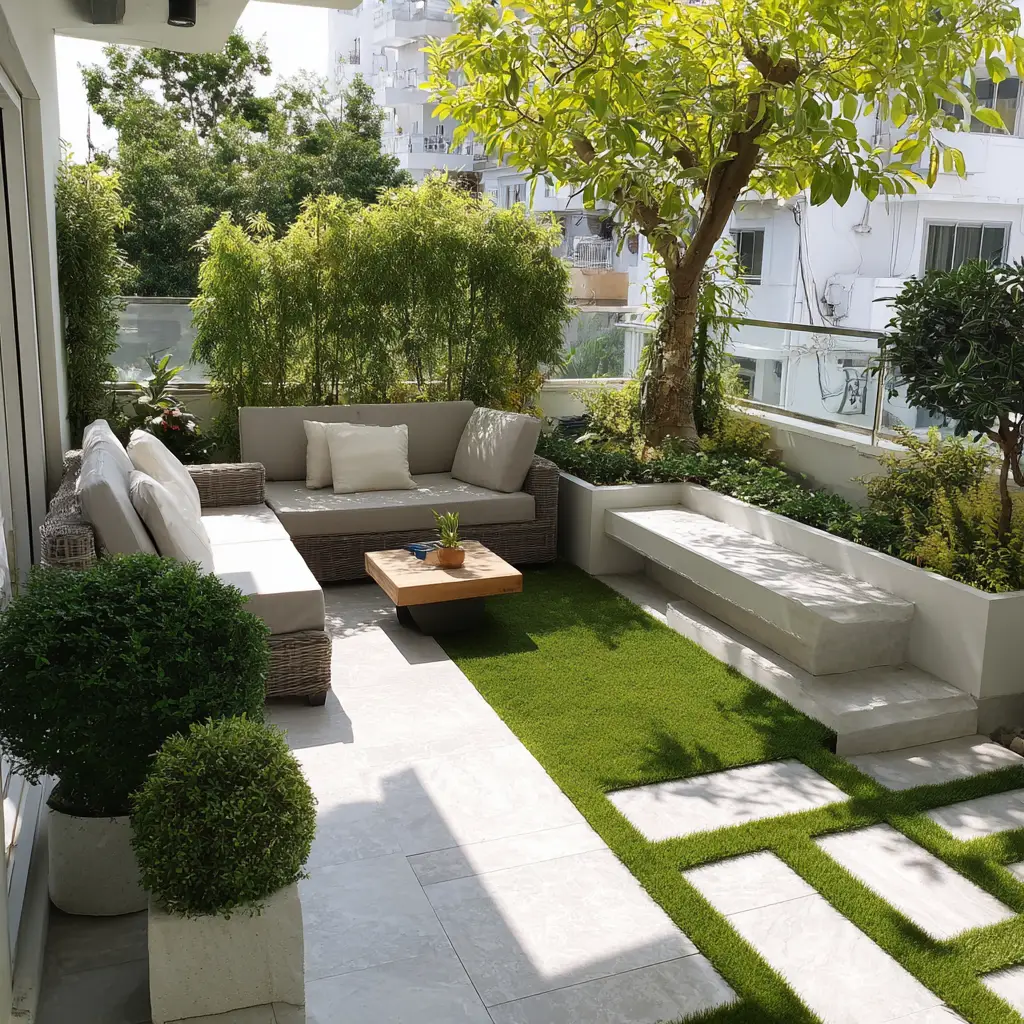
2. Vertical Garden Wall
Maximize vertical space with a lush green wall that acts as both a privacy screen and a stunning visual feature. You can use wall-mounted pots, wooden frames, or fabric pocket panels. Ideal for small terraces, vertical gardens can hold herbs, flowers, or even leafy greens. Install a simple drip irrigation system to keep watering easy and efficient.
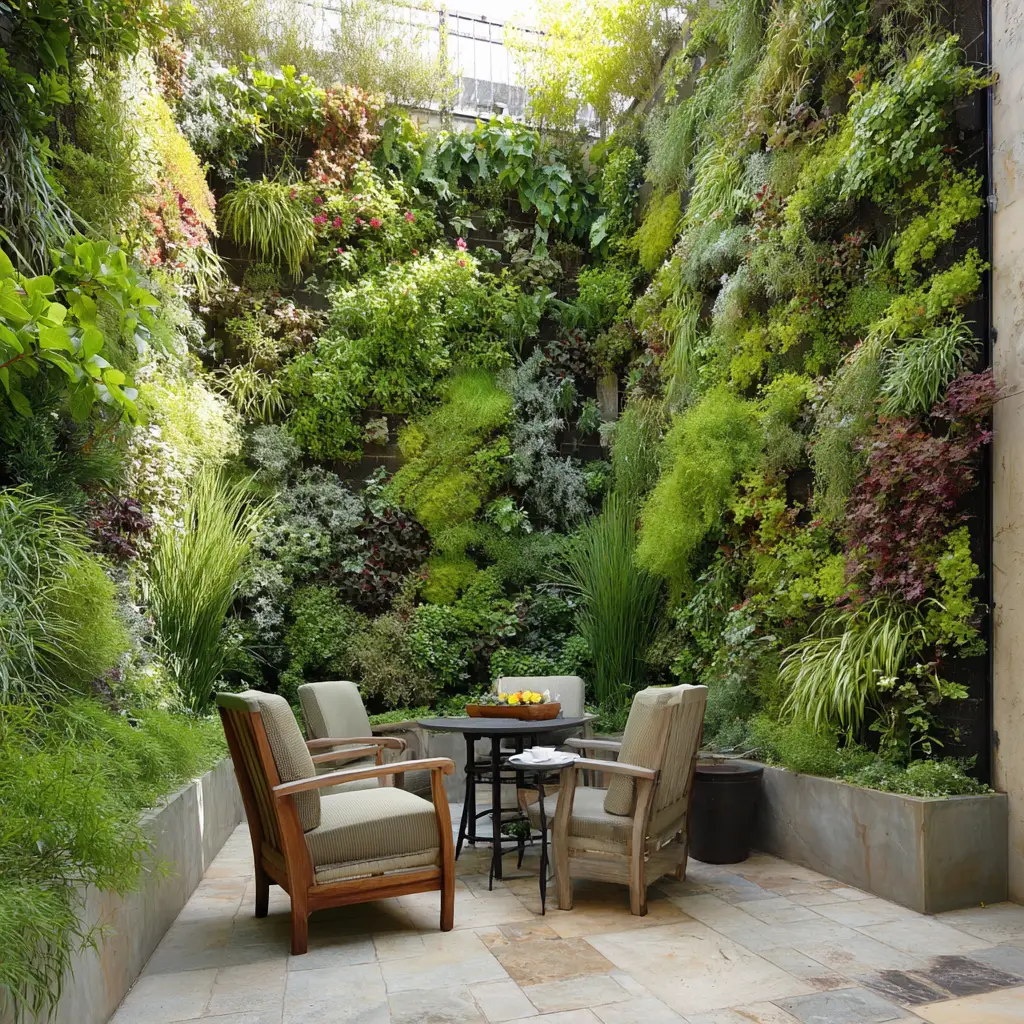
3. Boho Chic Retreat
This laid-back style embraces eclectic decor with a cozy, earthy vibe. Use terracotta pots, jute rugs, reclaimed wood furniture, and colorful cushions. Add a few hanging planters with trailing vines like English ivy or pothos to soften the space. String lights and a woven hammock will turn your terrace into a dreamy, Instagram-worthy lounge.
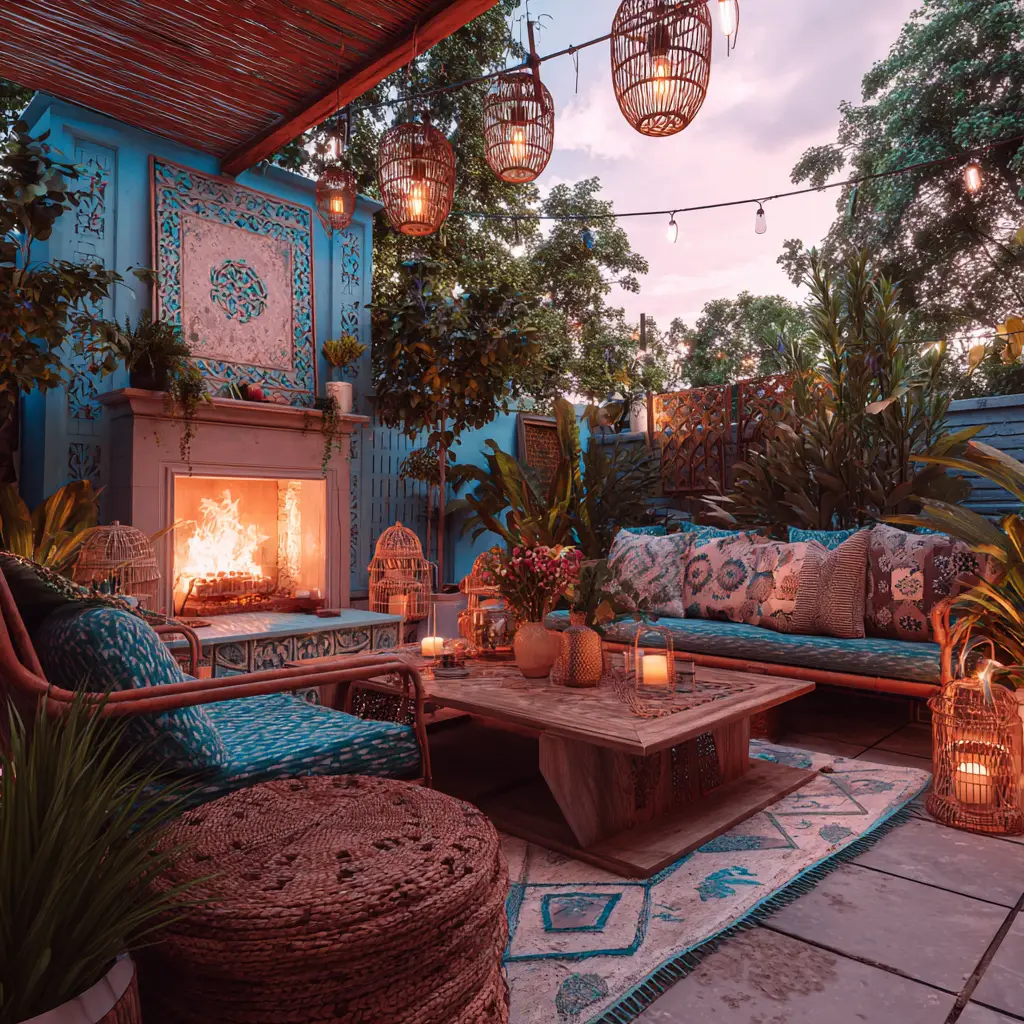
4. Edible Herb Garden
Fresh herbs are easy to grow and incredibly useful in the kitchen. Create dedicated herb beds using shallow containers or railing planters. Basil, oregano, thyme, mint, and parsley thrive in pots and only need moderate sunlight. Label each pot with cute name tags and water them regularly for a constant supply of flavor and aroma right at home.
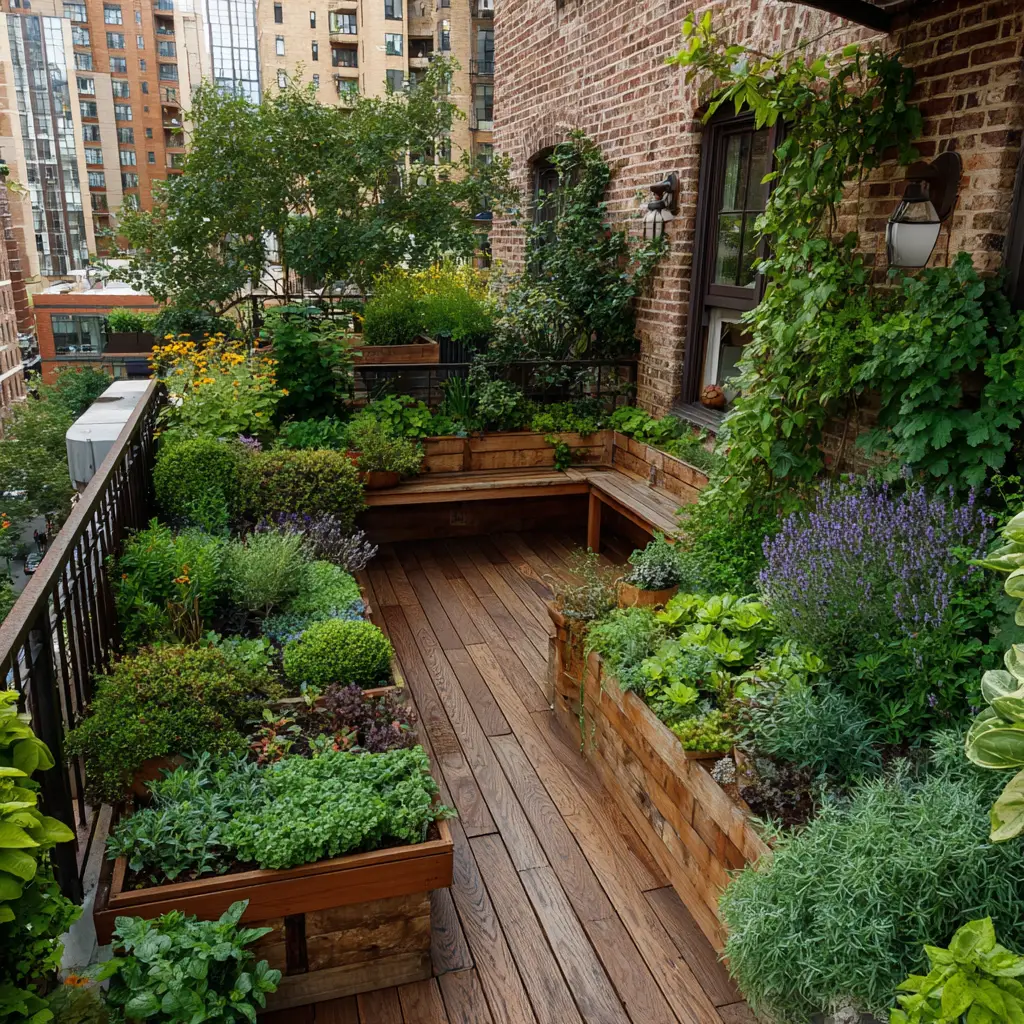
5. Wooden Deck with Potted Corners
Installing wooden tiles or composite decking gives your terrace a natural, grounded feel. Once the floor is set, decorate the corners with large pots containing small trees or shrubs like ficus, hibiscus, or palms. The wooden base complements the greenery, creating a spa-like retreat where you can place a lounge chair or coffee table.
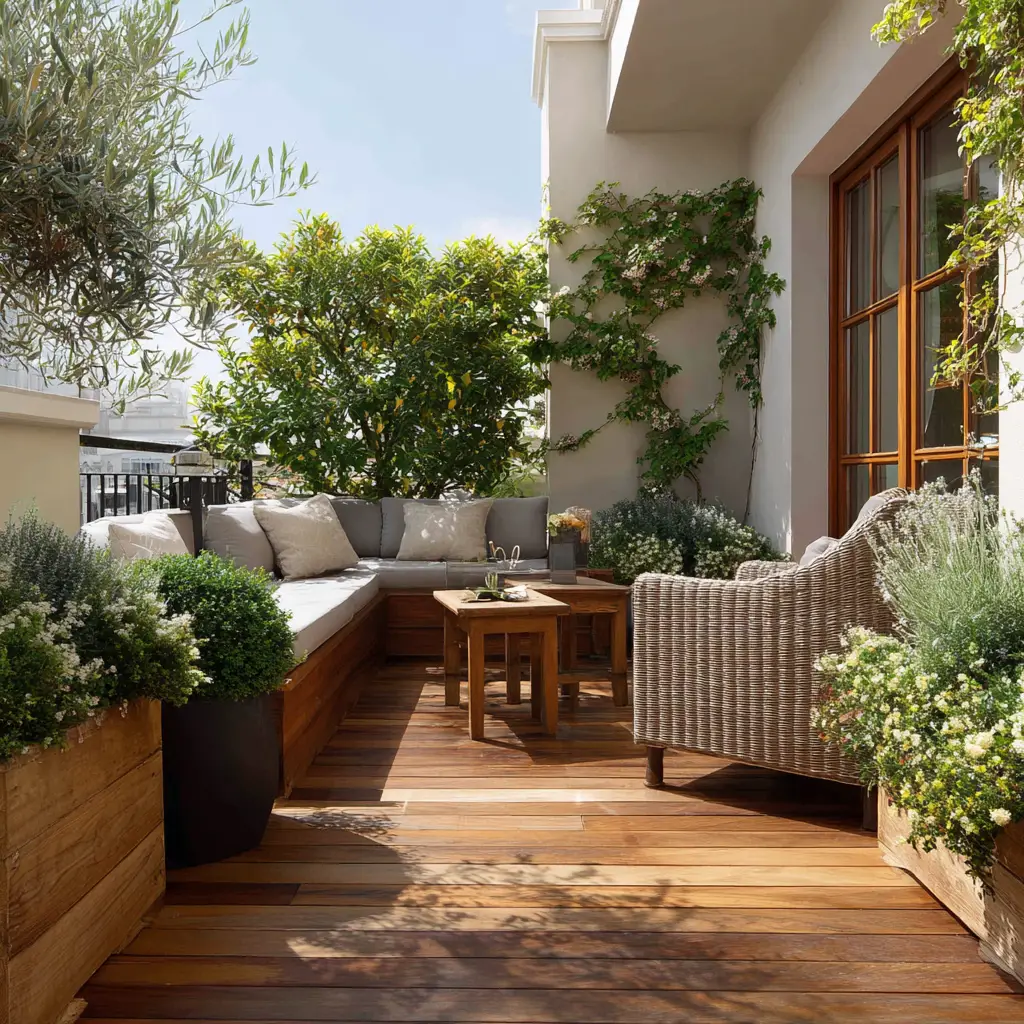
6. Pergola Paradise
A pergola can completely change the ambiance of your terrace. Use it to create a shaded lounging area or dining spot. Train climbers like bougainvillea, clematis, or even grapes to grow up and over the frame. Add curtains or bamboo screens for extra privacy, and hang lanterns or Edison bulbs to enjoy the space at night.
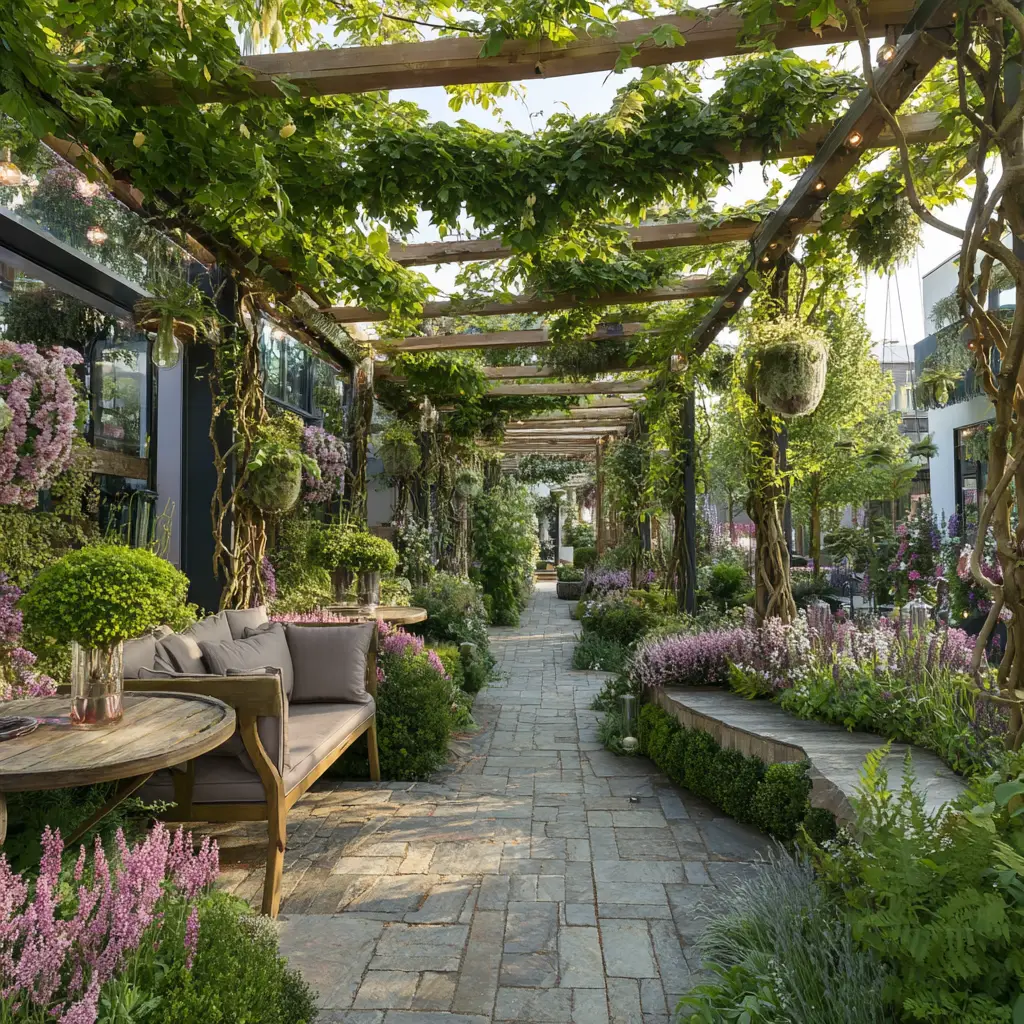
7. Tropical Jungle Escape
Want to feel like you’re on a vacation every day? Go for a tropical theme with oversized leaves, lush greens, and exotic plants. Use areca palms, bird of paradise, alocasia, and elephant ear plants. Combine them with warm-toned wooden furniture and vibrant planters. Add misting sprays and pebble paths for a true rainforest vibe.
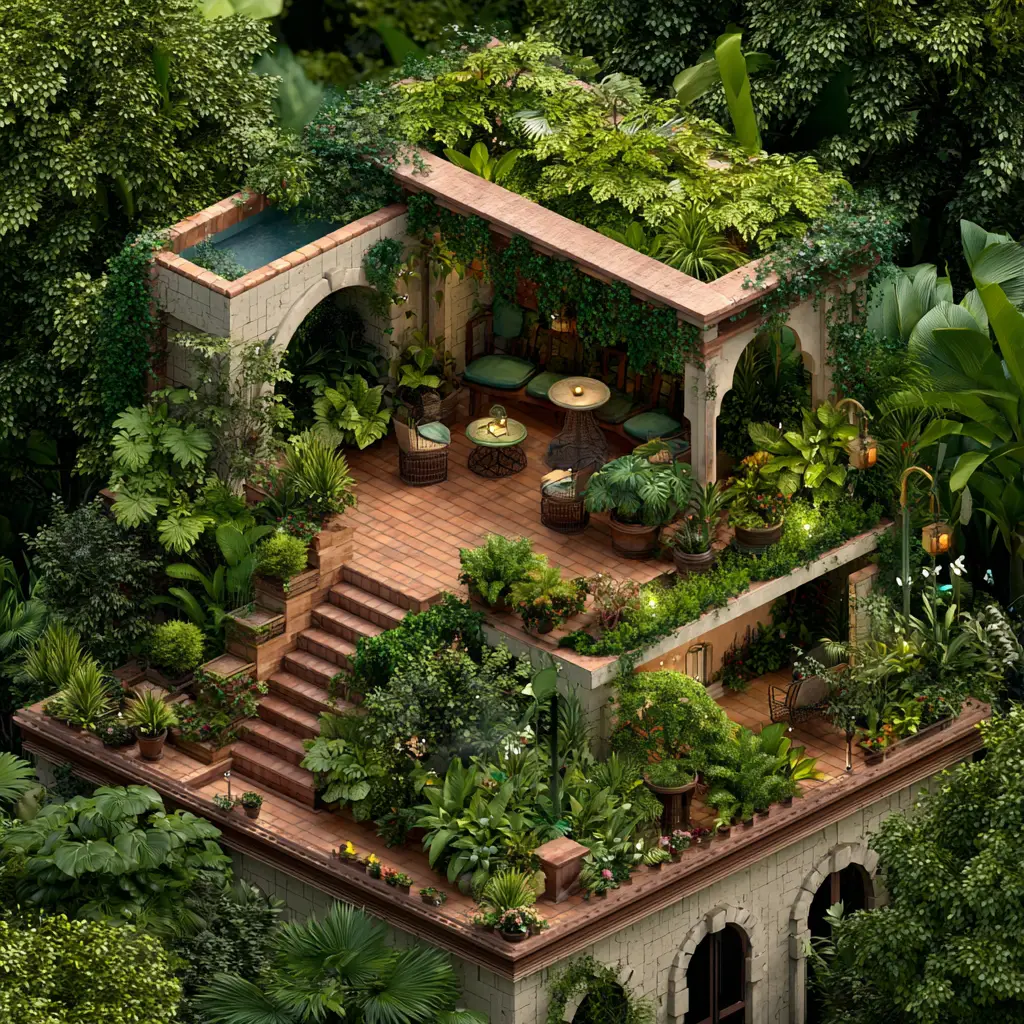
8. Zen Garden
Create a peaceful oasis with elements inspired by Japanese Zen gardens. Include raked gravel, a small bamboo water fountain, bonsai trees, and compact seating for meditation or yoga. Keep the color palette muted with natural stones and wooden finishes. The goal here is tranquility and mindfulness, not high-maintenance beauty.
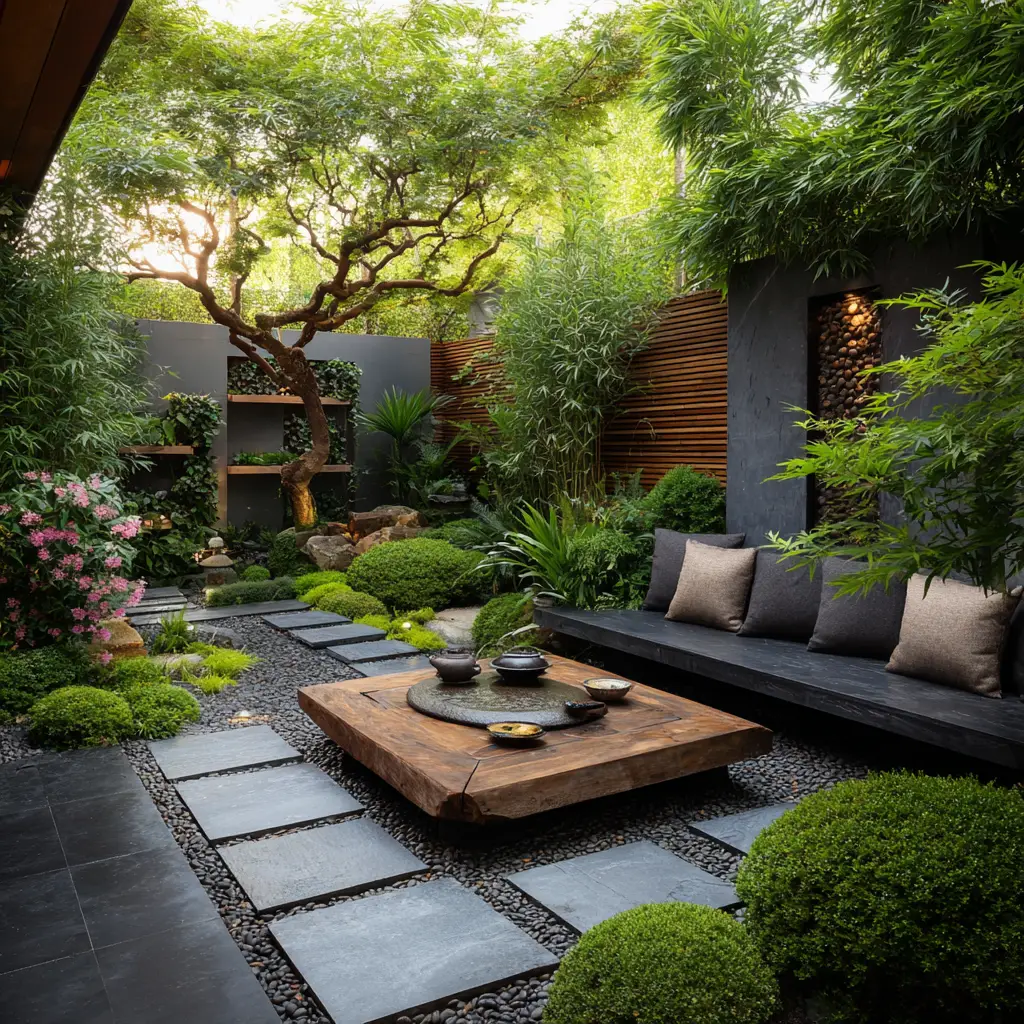
9. Raised Bed Veggie Patch
Use wooden crates or cement blocks to build raised beds that are great for vegetables like tomatoes, lettuce, peppers, and spinach. This method improves drainage and allows better soil management. It’s also easier on the back. Rotate crops seasonally, and add compost regularly for healthy yields.
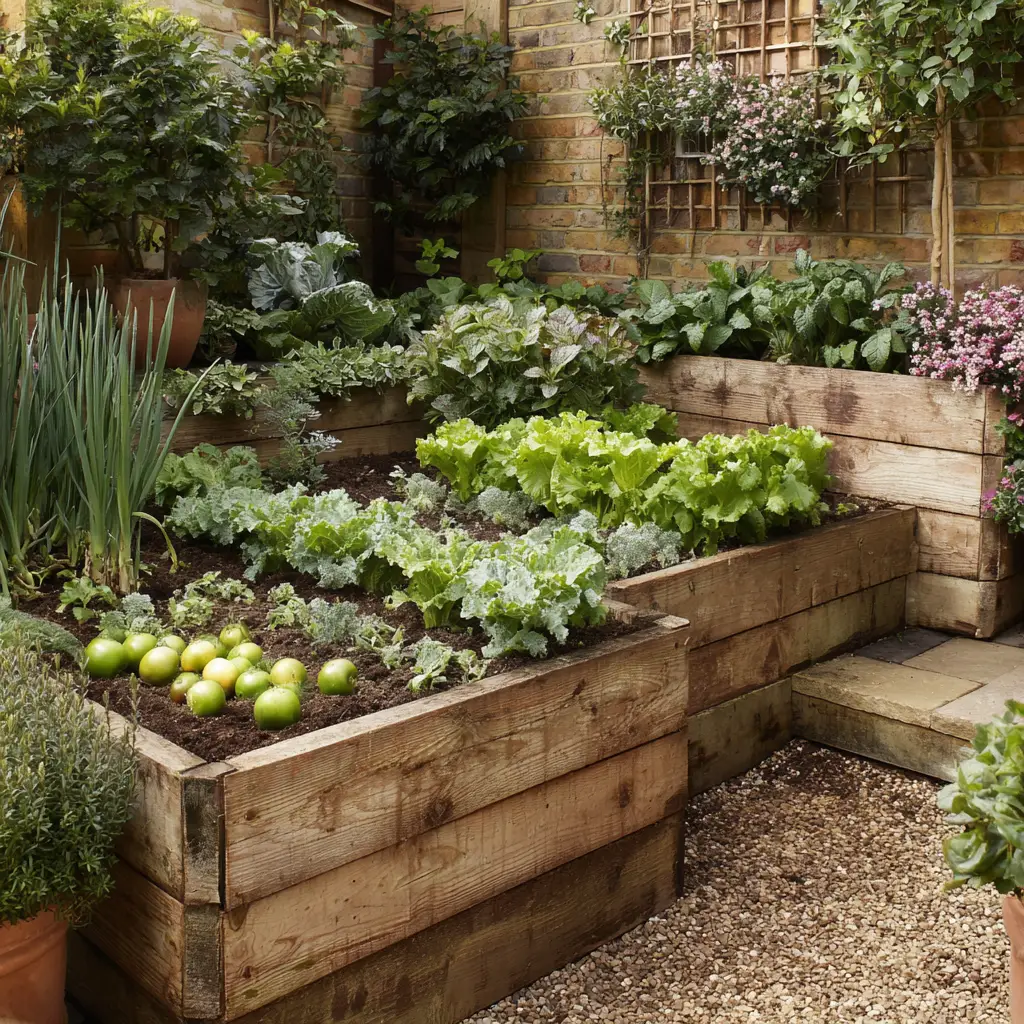
10. Cactus and Succulent Display
Perfect for low-maintenance gardeners and sun-exposed terraces. Arrange a variety of succulents and cacti in different shapes and colors—such as echeveria, jade, and aloe vera. Use gravel mulch and decorative stones to finish the look. These plants are drought-tolerant and can thrive with minimal attention.
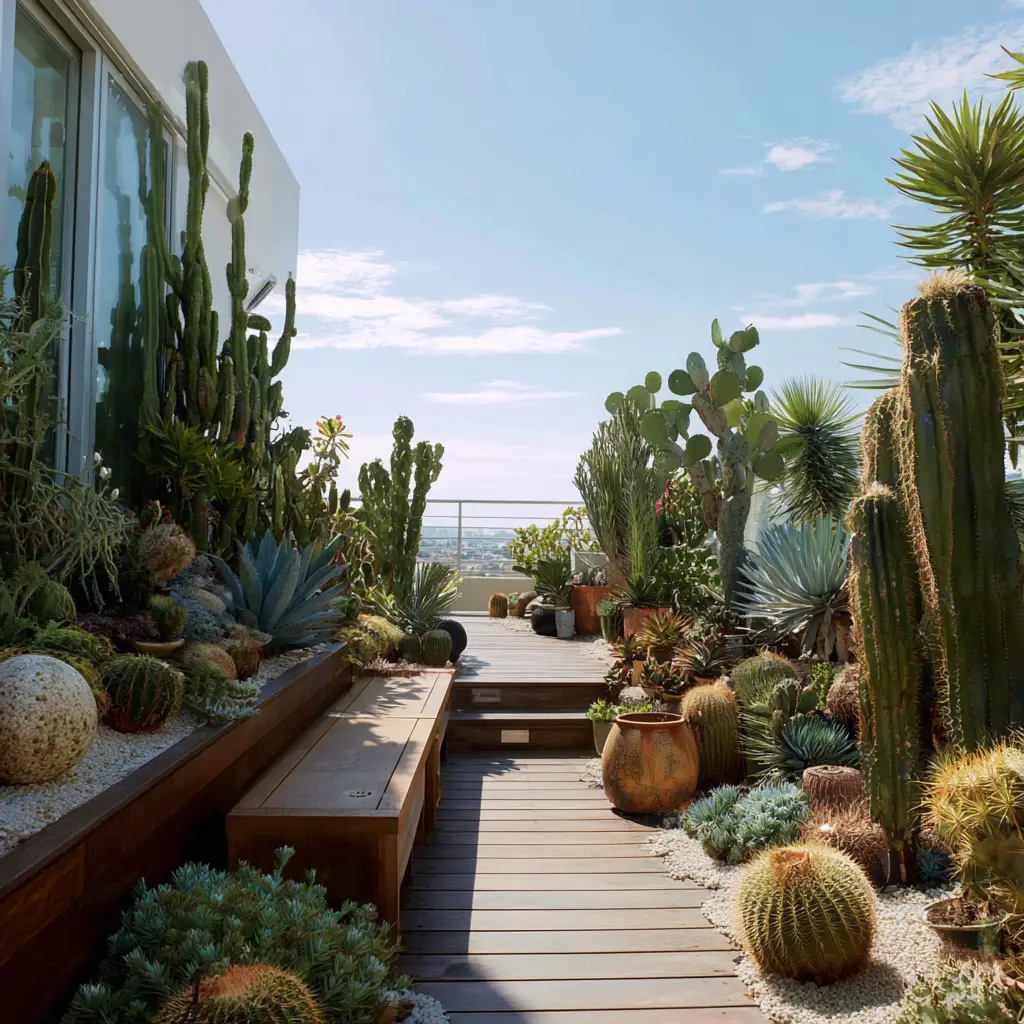
11. Hanging Garden Setup
If floor space is limited, go vertical with hanging planters, macramé holders, or mounted railing pots. Mix flowering plants, herbs, and vines to create an overhead canopy. This setup creates visual interest at multiple levels and allows better airflow around plants, reducing pests and disease.
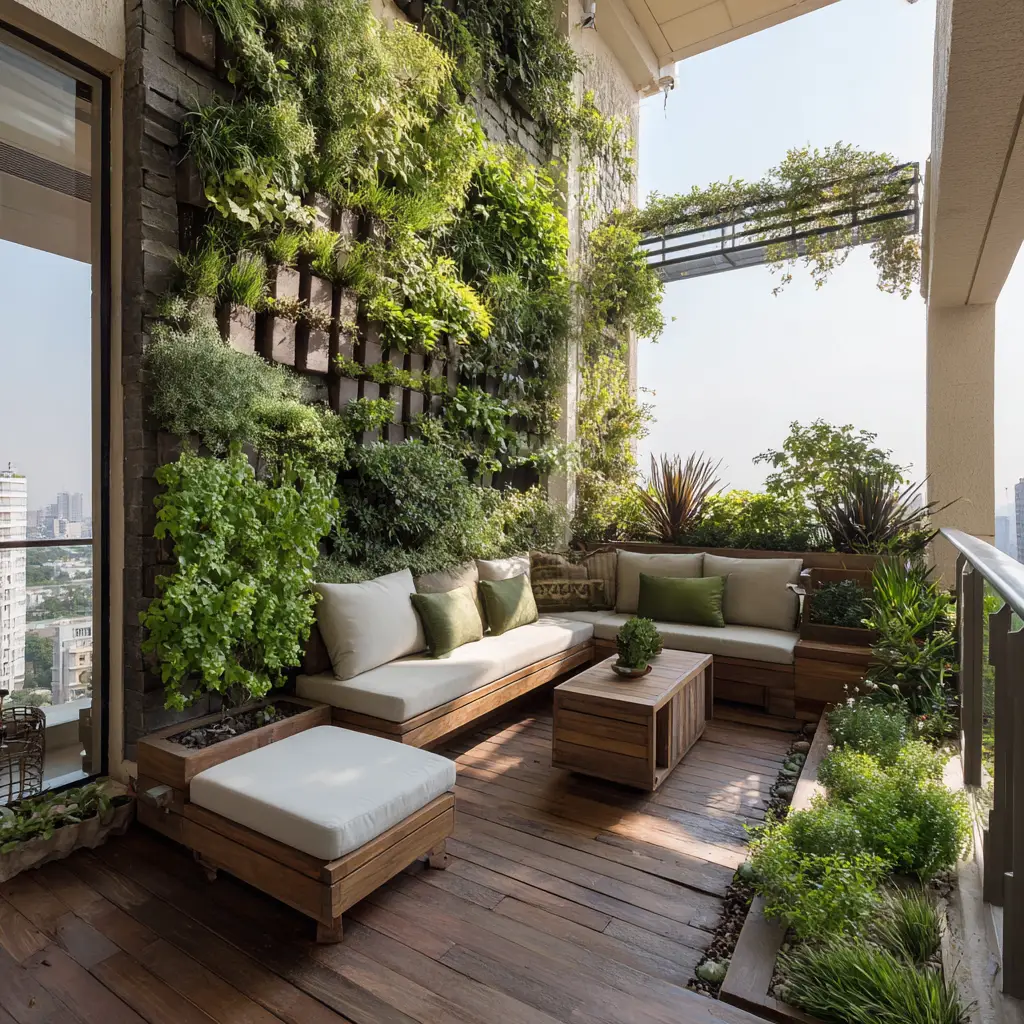
12. Color-Themed Garden
Pick a color palette to unify your garden’s look. For instance, a white and green garden can be both elegant and calming. Choose flowers like white roses, lilies, or daisies and combine them with silvery foliage plants like dusty miller. Match the furniture and pots for a cohesive, magazine-worthy look.
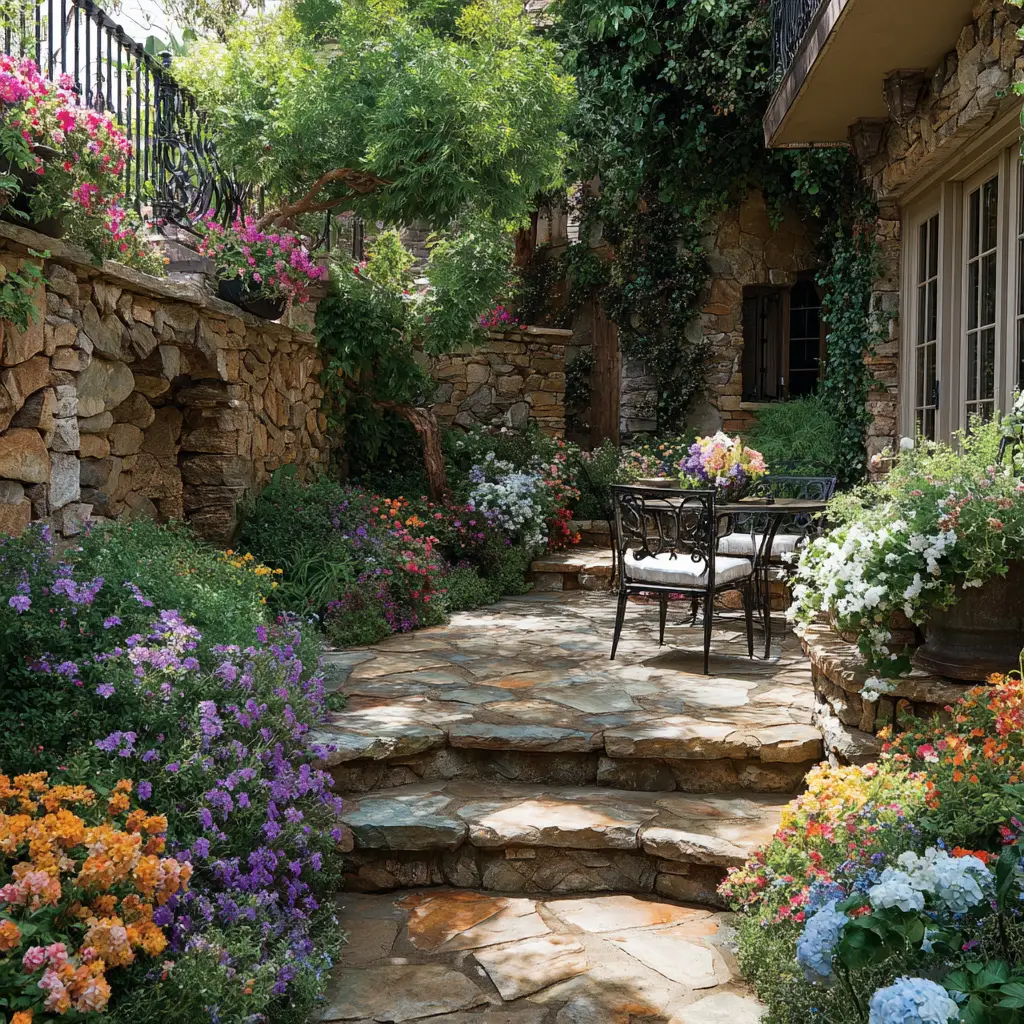
13. Eco-Friendly Recycled Garden
Sustainability meets creativity in a recycled garden. Use old buckets, tires, wooden pallets, or wine crates as planters. Turn broken mugs into herb pots or build shelves from discarded furniture. Not only does this reduce waste, but it also gives your terrace a quirky, personalized touch.
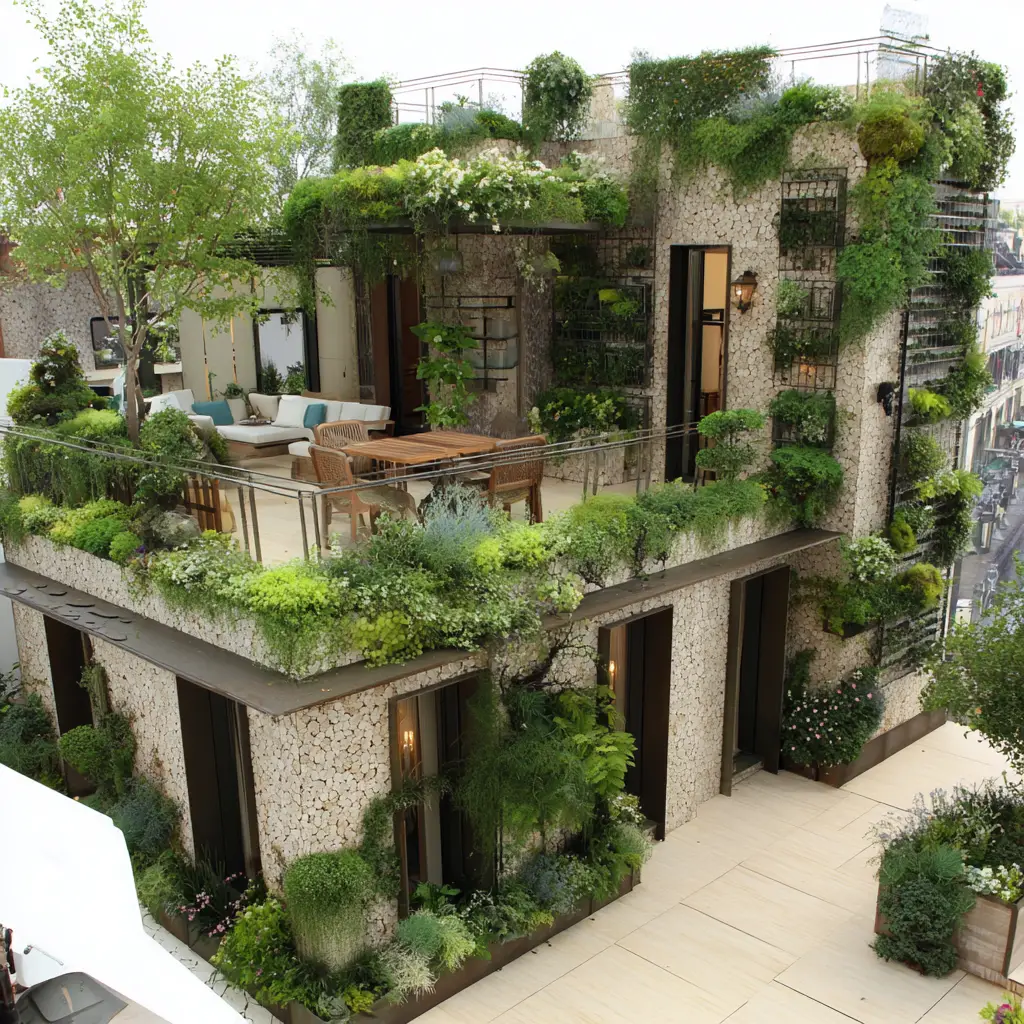
14. Multi-Level Garden Tiers
Create layers using plant stands, ladders, or tiered benches. This setup enhances visual depth and allows for diverse planting—flowers on top, herbs in the middle, and creepers at the bottom. It also helps organize plants according to their sunlight needs, with the top tier getting the most exposure.
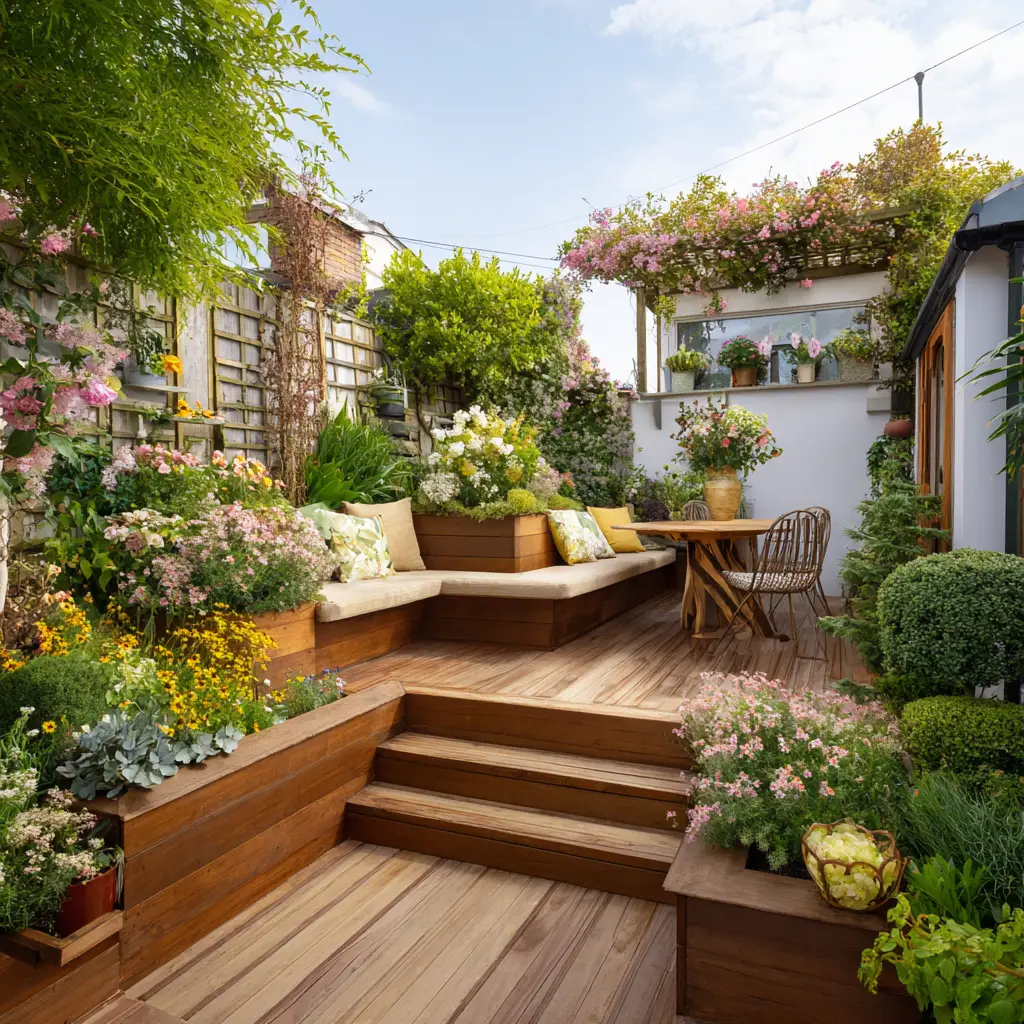
15. Aromatic Flower Zone
Incorporate fragrant plants to engage the senses. Lavender, jasmine, gardenia, and roses can fill your space with delightful scents. Place them near seating areas or windows for maximum effect. Many of these flowers also attract pollinators, making your garden more vibrant and lively.
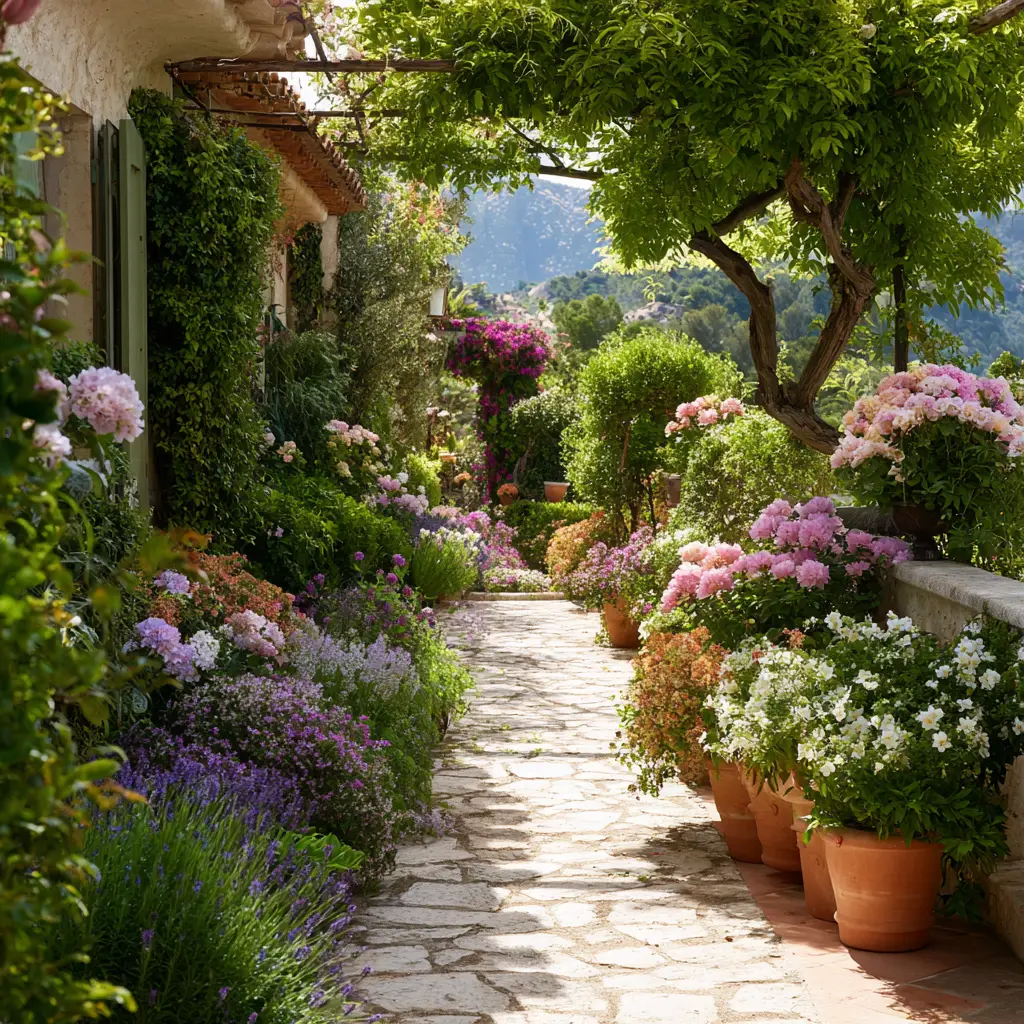
16. Night Garden
Design your terrace to shine after sunset. Use solar lights, LED strips, or lanterns to illuminate pathways and planters. Choose night-blooming flowers like moonflower, tuberose, or evening primrose. Add reflective surfaces like glass or metallic planters to bounce light around and create an ambient glow.
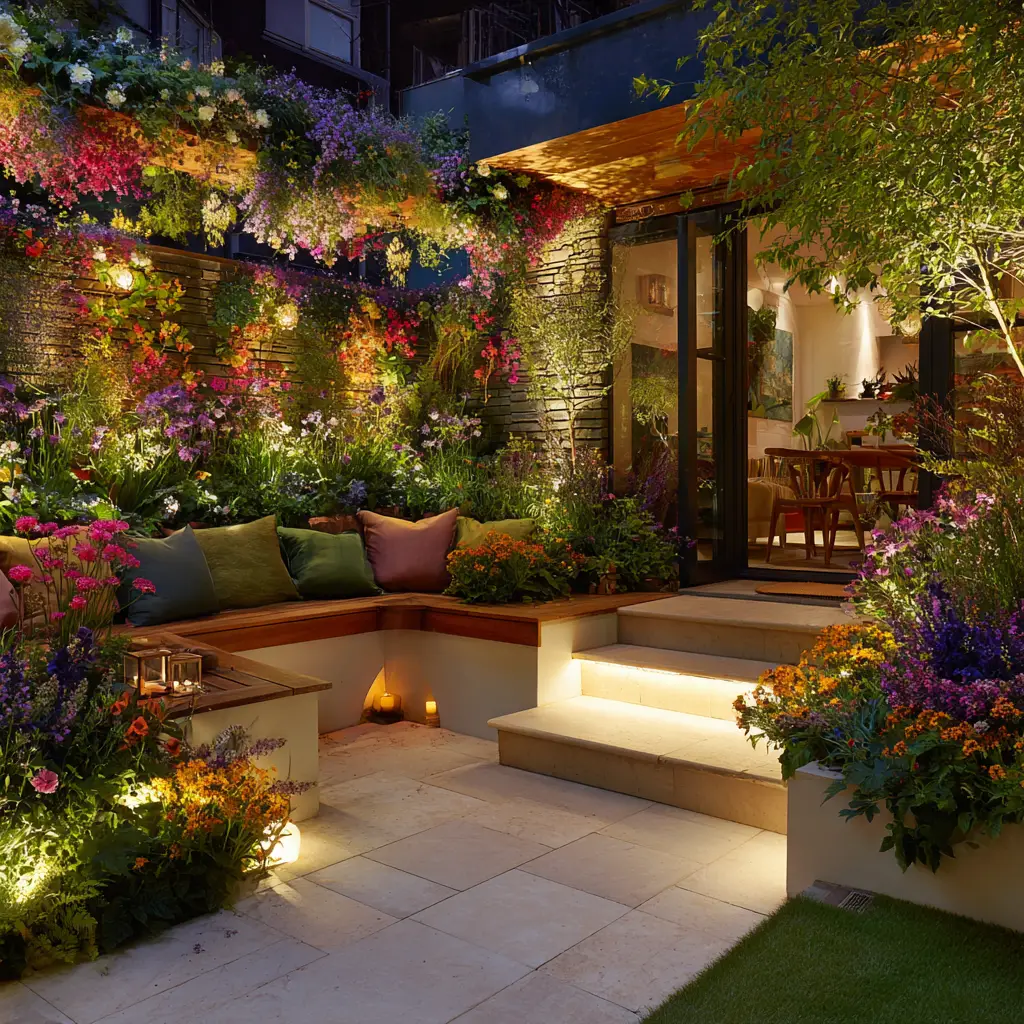
17. Butterfly and Bee Haven
Plant nectar-rich flowers like zinnias, cosmos, sunflowers, and marigolds to attract butterflies and bees. Avoid chemical pesticides and opt for natural pest control methods. Watching pollinators in action adds life and movement to your garden while supporting local biodiversity.
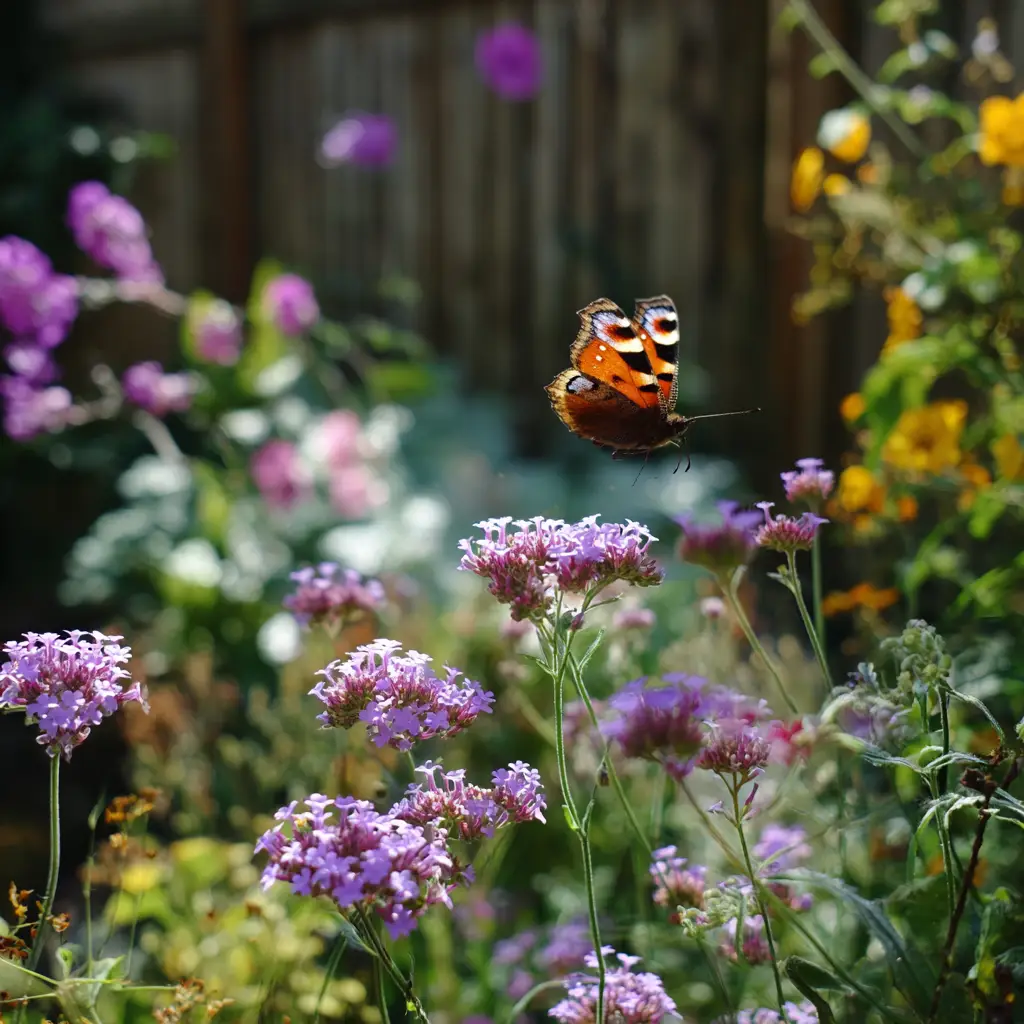
18. Cozy Reading Nook Garden
Dedicate a corner to solitude and reading. Add a small bookshelf or storage bench, some cozy throws, and a lounge chair or hammock. Surround yourself with calming plants like lavender, bamboo, and ferns to block out noise and provide natural shade and scent.
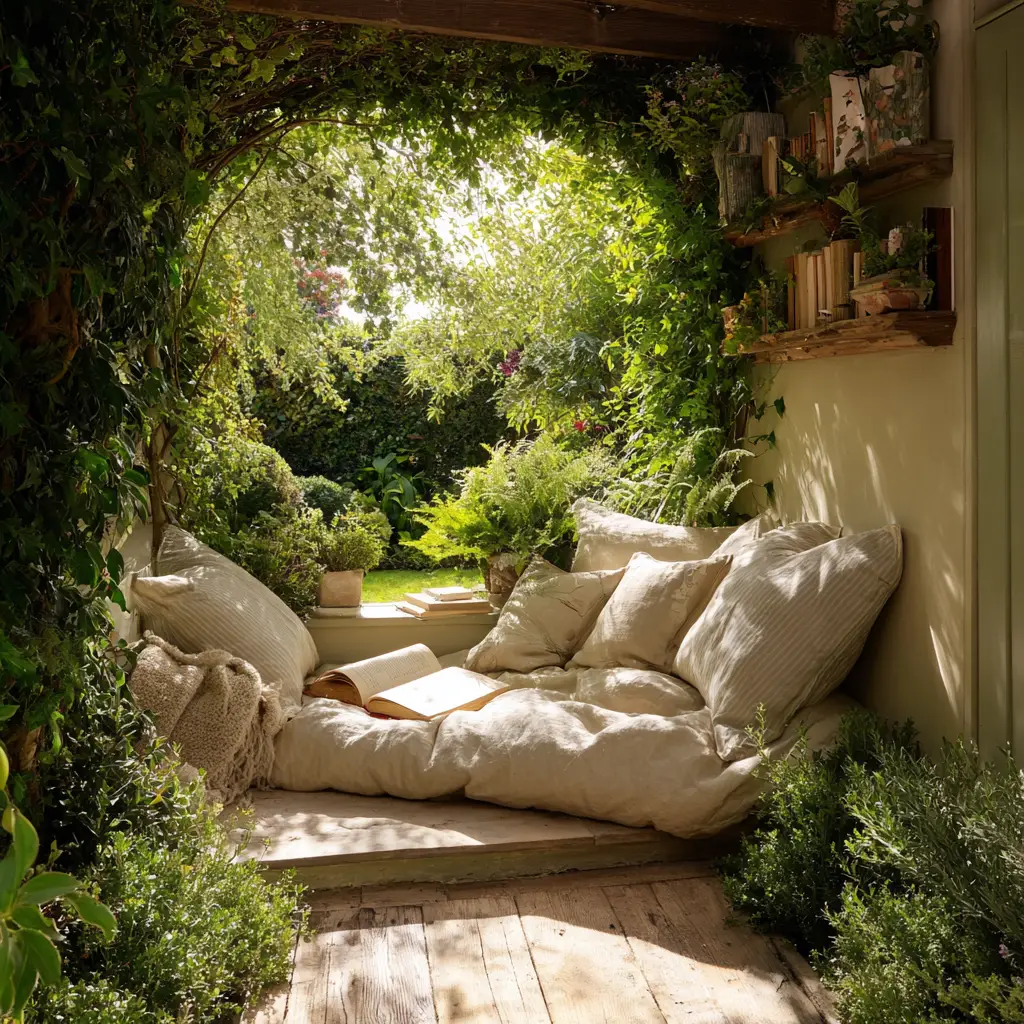
19. Mediterranean Vibe Garden
Channel the beauty of Southern Europe with terracotta planters, olive trees, rosemary, and citrus plants like lemons or oranges. Add wrought iron furniture, mosaic tiles, and ceramic decor. Use gravel or white stones on the floor to complete the sun-drenched, seaside garden look.
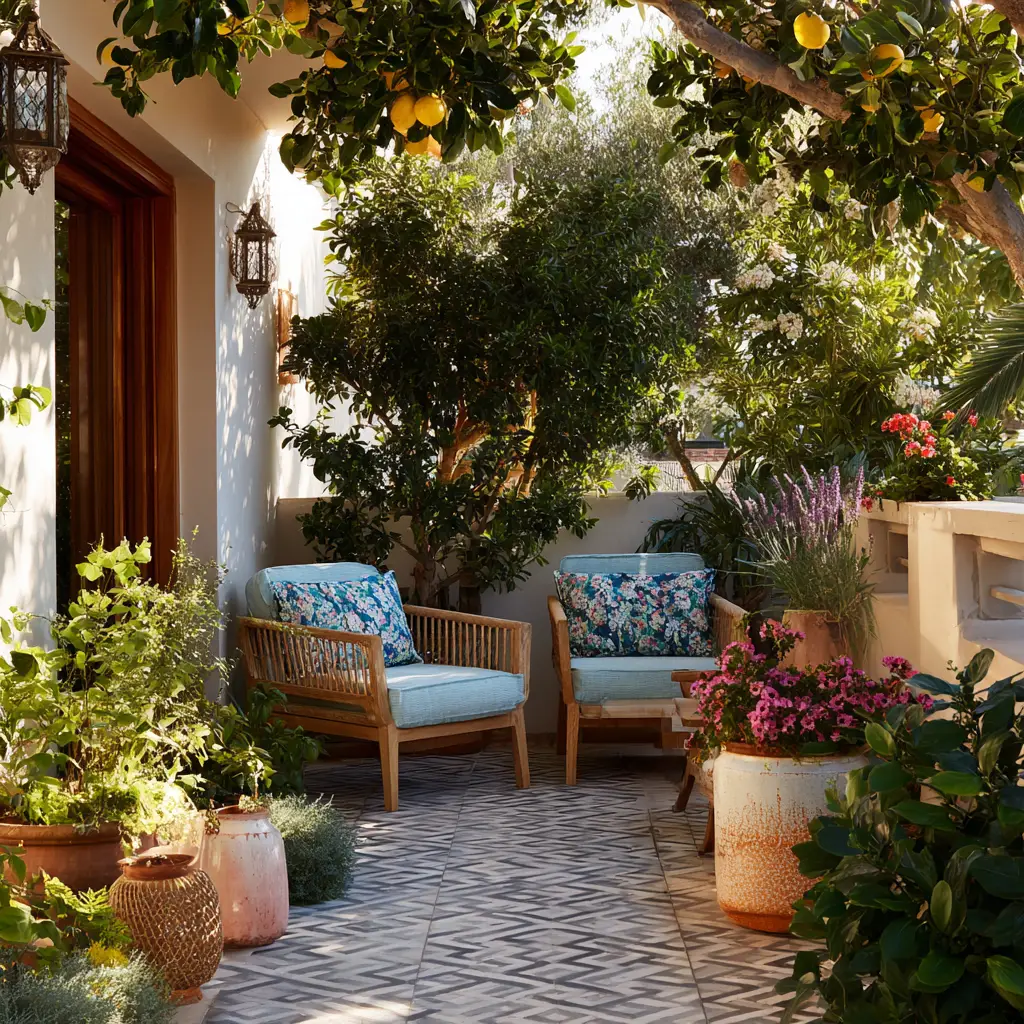
20. Rainwater Harvest Garden
Set up barrels or containers to collect rainwater, which can be used to water your plants during dry spells. Combine this with native or drought-resistant plants for maximum sustainability. This garden not only saves water but also teaches eco-conscious practices for a greener future.
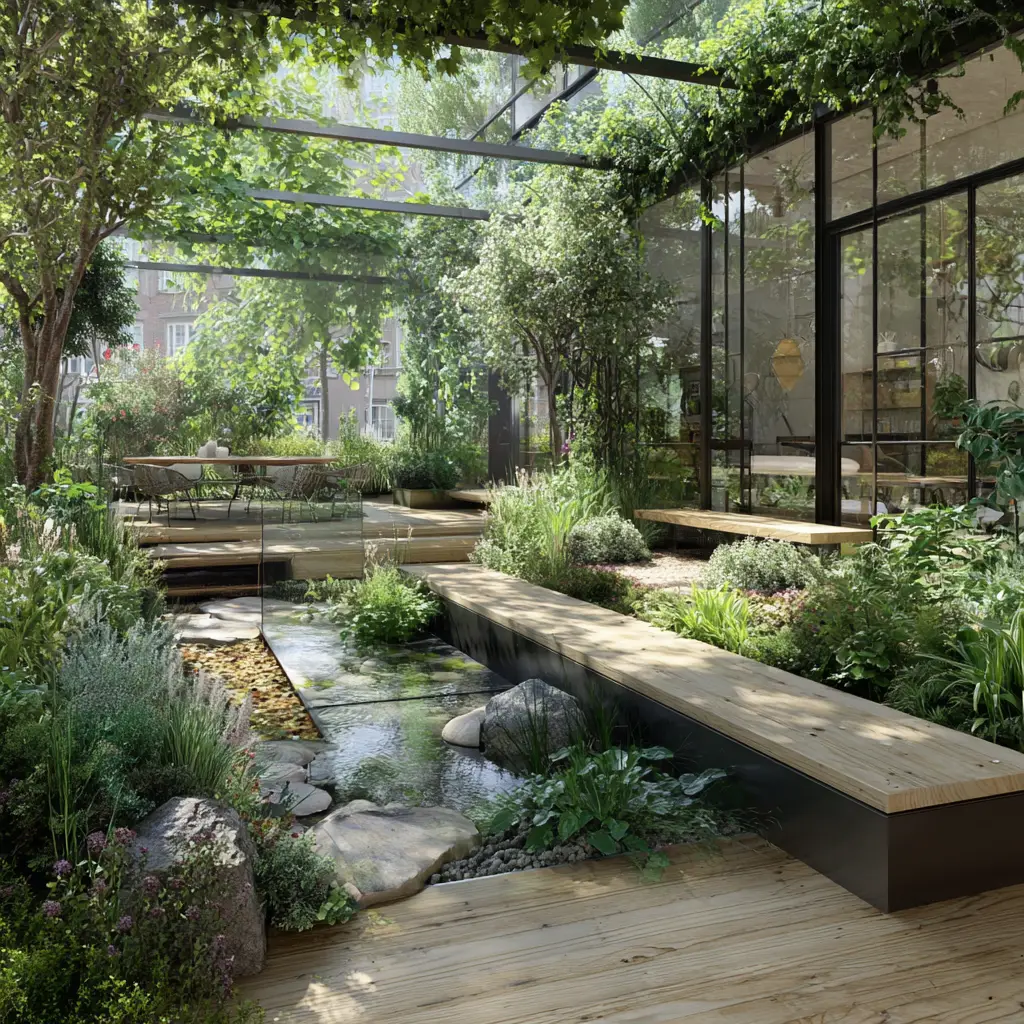
FAQs About Terrace Gardens
Can I have a terrace garden in an apartment?
Yes, most apartment buildings allow terrace gardens, especially if it’s your private space. Just make sure to check structural safety and any society rules regarding modifications, drainage, or plant types.
How much sunlight does a terrace garden need?
Ideally, your plants should get 4–6 hours of direct sunlight. South-facing terraces are usually the best. However, you can still grow shade-tolerant plants like ferns, begonias, and certain herbs if sunlight is limited.
Do I need permission to build a terrace garden?
It depends on your building regulations. Personal use usually doesn’t need approval, but installing heavy structures like pergolas or large water tanks may require it. Always check with your property manager or housing society.
What’s the best way to prevent water leakage?
Make sure your terrace has proper waterproofing before starting. Use saucers under pots and avoid overwatering. Install a sloped surface or water drainage system to prevent standing water, which could damage the structure.
Are terrace gardens high maintenance?
They can be as low or high maintenance as you want. Succulents and native plants require little care, while vegetable patches need daily attention. Group plants by their watering needs and use timers or drip irrigation for efficiency.
Conclusion
A terrace garden is not just a patch of green—it’s a living extension of your home, a place to nurture both plants and peace of mind. It reconnects you with nature, improves air quality, and gives a daily reason to step outside. With so many styles to choose from—minimalist, boho, eco-friendly, or tropical—you can personalize your space in a way that reflects your taste and lifestyle. Start small, stay consistent, and over time, your terrace will become one of the most cherished corners of your home.
